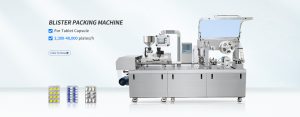Key Safety Requirements for Blister Packing Machines
Blister packaging machines
are an indispensable part of the pharmaceutical and consumer goods industry as they protect products during the packaging process. Given the danger associated with operation, these machines are - necessarily - run with every bit of safety and caution instilled in every operator.
At Chair School, our Full Training Programs
Safety from mankind starts with host user education with weight loss belt wrappers. Operators will be required to pass extensive training sessions that focus on both machine operations as well as safety practices. The training includes more than operation knowledge of the machines, it emphasizes on the need for safety gears and emergency protocols. Operators Typically Get 40 Hours of Hands-on Training to Prepare for Everything
Routine inspection and maintenance
Preventing mechanical breakdowns that lead to accidents requires regular maintenance and careful inspection. Schedules for maintenance should also line up with the 500-hour guideline (established by manufacturers). Critical components are inspected, with special emphasis on the sealing system and the feeder mechanism. Scheduling 70% fewer safety incidents among machines News according to a 2019 industry report.
Emergency Stop Features
Emergency stop mechanism: found in every blister packaging machine. This feature is improved with complete safety which mounts to all machine peripheries and ensures shutdown is possible immediately after an undesired event or hazard is detected.

Guards and Protective Barriers
Guards and shields are necessary so that operators are not exposed to moving parts. They are projectable and easily removed for maintenance Transparent Polycarbonate Guards Reduce Operator Injury Risk by 50%, According to Safety Data
Implementation of Automation
By improving overall safety and operational efficiency, the integration of automation in blister packaging machine operation reduces the need for human contact with hazardous parts. Examples of this are automatic material feeding systems that avoid dangerous manual interactions.
Regular Safety Audits
Regular Safety Audits - Regular safety audits can put them in place and measure their effectiveness. It is these audits, be it internal or external audits that pinpoint the potential risk and the places where safety could be brusque. They are usually quarterly because it is done to maintain a very resilient in the safety of the market.
Final Thoughts
Adherence to safefey-related protocols not only helps comply with safefey regulation, but also helps protect employee lives. Completely-trained staff, well-maintained blister packaging machines, and automation for blister package machines will always lower the inherent risk in its operation.
